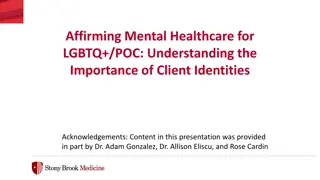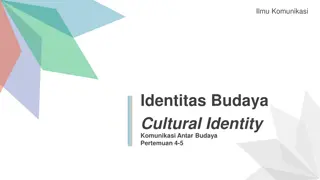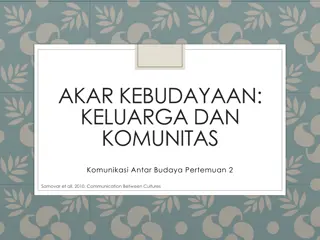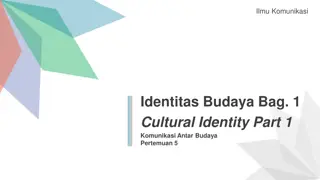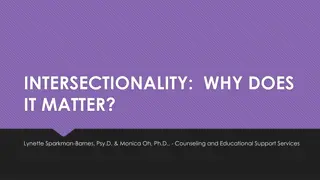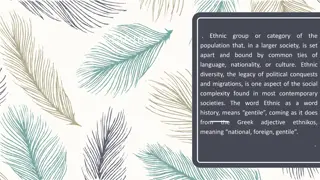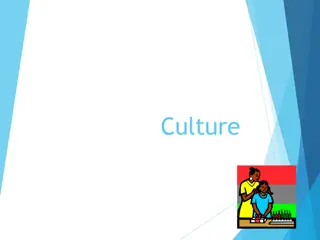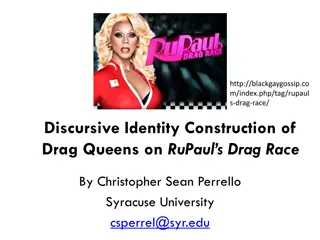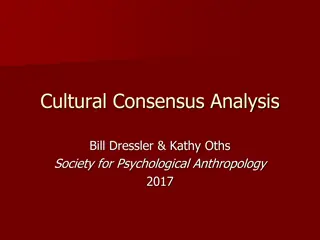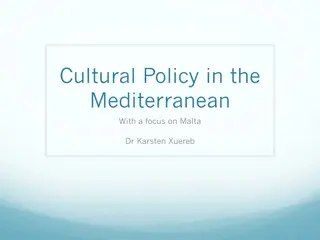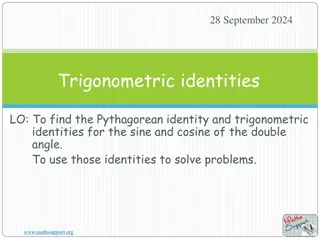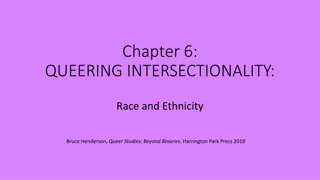Exploring Digital Diasporas: Audience Dynamics and Cultural Identities
In this comprehensive study, Professor Janet Wilson delves into the evolving landscape of mediatised digital diasporas, examining audience behaviors, consumption patterns, and production practices. The research sheds light on the intersection of technology, migration, and media, offering insights into the politics of home, post-imperial British identities, and the significance of digital encounters in shaping diasporic communities.
Download Presentation

Please find below an Image/Link to download the presentation.
The content on the website is provided AS IS for your information and personal use only. It may not be sold, licensed, or shared on other websites without obtaining consent from the author. Download presentation by click this link. If you encounter any issues during the download, it is possible that the publisher has removed the file from their server.
E N D
Presentation Transcript
Digital Diaspora Audiences Professor Janet Wilson, Principal Investigator, Diaspora Screen Media Network
Audiences of mediatised digital diasporas changing face of media industry Who are the audiences of mediatised digital diasporas? i.e. who use the social media and might contribute to changing consumption patterns What are drivers in accessing diaspora visual culture? How does the UK TV industry target audiences and viewers esp regarding Black British/British Asian visual culture ? The lens of active audience is missing link. Gap in knowledge of diaspora media s production practices, news processing and audience consumption. (Ogunyemi 2015, 2) in conceptualising appropriation of media by diaspora groups frameworks are: public sphere, identity, alternative media (hybrid-- using alternative and mainstream media)
Definitions of diasporas Diasporas: immigrant, and relocated communities in (potentially hostile) hostland that retain bonds of loyalty and affiliation to their original homeland, may share with co-diasporans in cyberspace. Imagined communities, as deterritorialised nations making homes in diasporic space Exchange symbolic goods and services through media in context of global networks (Karim) Migration aligned with technology, which has facilitated movement in our time (Alonso and Oiarzabal, 2010). Some groups seek migration because lack of high technology environment at home deprives them of opportunity and free choice for personal development (Ogunyemi, )
The politics of home Strategies of digital Homelanding , i.e. forge inclusive home space imagined affiliations, multiple, contradictory notions of home(Gairola, 2019) Connecting to the visual culture of original homeland helps forge a home space, Home matters most to first generations diasporans. For 2ndgeneration diasporans what motivations in accessing Black British/British Asian TV & cinema?
Post-Imperial British identity Diasporic site is a 3rdspace (Homi Bhabha) i.e. between cultures- place of creativity and resistance to colonisation, In digital diasporas, a multiplicity of representations, mass- media broadcasts, textual and visual performances, and interpersonal interactions occur. The material and discursive shaping of community through digital encounters indicates nuanced and layered continuities, discontinuities, conjunctures, and disjunctures between colonial pasts and a supposed postcolonial present Radhika Gajjala 3D Indian Diasporas in Alonso and Oiarzabal (2010)
Channel 4: shift to digital TV in 2012 we are dealing with an unprecedented amount of change in the way people access, consume, and engage with our products. (David Abraham, June 2013, qtd in Hadida and Astandu 2013) Rapid nature of development in media technologies poses conceptual methodological challenges for studying current audience practices (Hight and Harindranath 2017)
Big Data analysis From a viewer's perspective, Big Data allows C4 to engage its audience in a meaningful relationship by enhancing their viewing experience. C4 in 2013 set up a research panel of 10,000 registered users to partake in on- going viewer research to help shape future content on C4. The panel provides vital feedback on program commissioning and content quality. https://www.channel4.com/4viewers/ Twitter comments improved ratings by 29% in 2013 Data pairing-- ads that target audience members (Hadida and Astandu 2013) Different types of audience: e.g. paying; attentive; target
Youth Audiences: Media Representation Streaming channels YouTube, I-Player and Netflix oriented to youth audiences, Channel 4 provides on demand content- has 9 million registered viewers in 2013; that included one third of 16- 24 year olds living in UK Themes: gang warfare, knife crime, street violence, grooming- more eclectic representations needed? C4 data analysis shows how platform linked to commerce and branding
Mainstream and Older Audiences Dedicated digital channels available via Freeview (Zee TV) cater for broader audiences (Cf YouTube, Netflix and Amazon for younger ) Mid 1990s Goodness Gracious Me, Citizen Khan, Kumars of No 42 - middle class films & stereotypes 2019 Gurinda Chadha s Blinded by Light, also for traditional audiences Diversification and widening of representation needed Do BAME people need to be represented by Black directors? How are older people catered for? Are youth audiences catered for above all other types?
Knowledge diasporas- why use social media Politics of representation of 70s and 80s demarginalizing Black British/British Asian, members of misrecognized groups reject [negative] images in favour of new self-representations of their own making, jettisoning internalized, negative identities and join collectively to produce a self-affirming culture of their own (Ty quoting Fraser 2000). Use wider range of aesthetic strategies Knowledge diasporas outside usual frames of diasporas- more complex condition, many as insider/outsider (Georgiou 2006 cited by Ogunyemi) Diasporic groups use social media in relation to broader fields of practice: information, entertainment, engagement, commerce and faith (Bozdag 2012 99-100), rather than for political awareness of minority culture
Conclusions: Diasporic media (hybrid) Move away from burden of representation of 1990s (one person spoke for whole community) . Does audience reaction to content indicate representation itself is changing? Relationship to mainstream channels that provide on demand online content compete with alternative platforms, providers? What does Big Data analysis tell us about Black British/British Asian viewers is this still minority cinema ? Knowledge diasporas? Impact of globalisation. Other alternatives to homeland politics and politics of identity associated with 1980s and 90s for 2ndgeneration?
References All gre Hadida & Timothy V. Astandu. [2013] 2016. Big Data and Channel 4 (Case B). Cambridge: University of Cambridge, Judge Business School. DOI: http://dx.doi.org/10.4135/9781473974913 | Online ISBN: 9781473974913 Alonso, Andoni and Petro J. Oiarzabal. 2010. The Immigrant Worlds Digital Harbour: An Introduction , in A Alonso and P. J. Oiarzbal, eds. Diasporas in the New Media Age : Identity, Policy and Community. Reny: University of Nebraska Press. 1-19. Gajjala Radhika. 2010. 3D Digital (Indian) Diasporas in Alonso and Oiarzabal, eds., 209-224. Hight, Craig and Harindranath Ramaswami, eds. 2017. Studying Digital Media Audiences: Perspectives from Australasia. Routledge Karim. H. Karim, ed. 2003. Mapping Diasporic Mediascapes . Introduction to Media of Diaspora: Mapping the Globe, 1-16 . Routledge. Nimrod, Galit. 2017. Older Audiences in the Digital Media Environment. Information, Communication & Society, 20.2: 223-249. Ogunyemi, Ola, ed. 2015. Conceptualising the Media of Diaspora , Introduction to Journalism Audiences & Diaspora, ed Ola Ogunyemi .London: Macmillan.. Roopika, Risam and Rahul Gairola. 2019. Studying Digital Humanities: Then and Now. Introduction to Special issue of South Asian Review. https://doi.org/10.1080/02759527.2019.1599548 Ty, Eleanor. Representing Other Diasporas in Recent Global Canadian Fiction . College Literature 8.2 (Fall 2011): 99-114.



